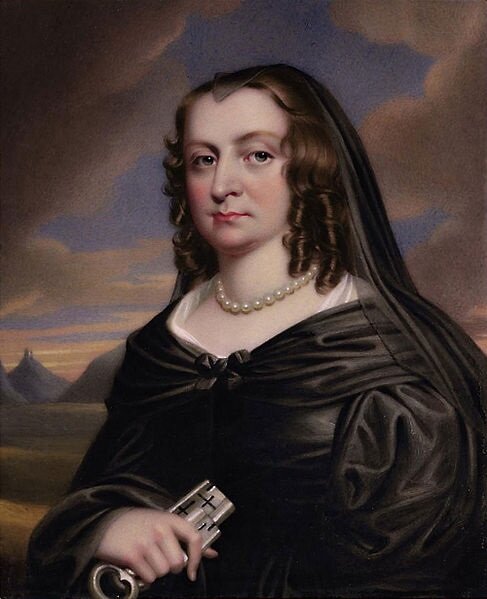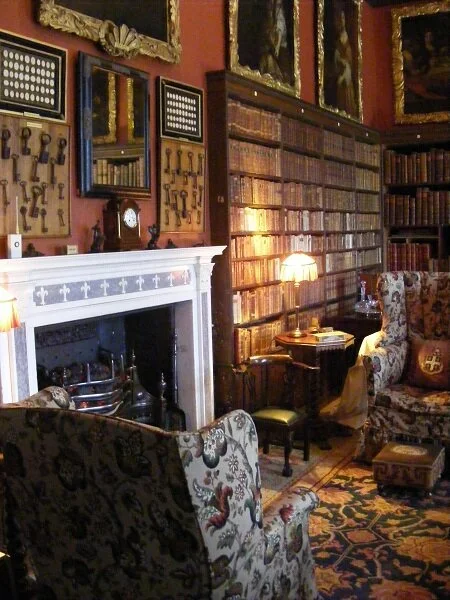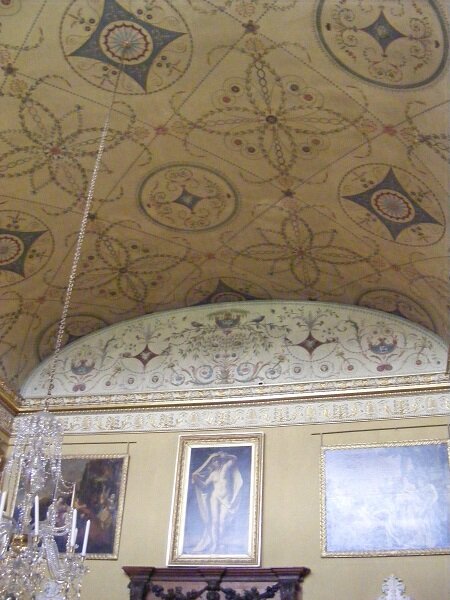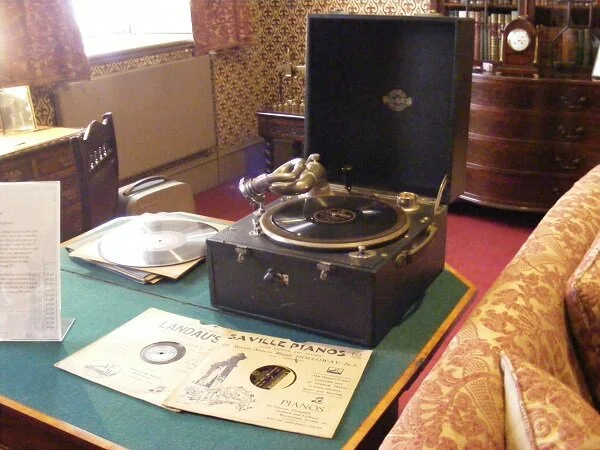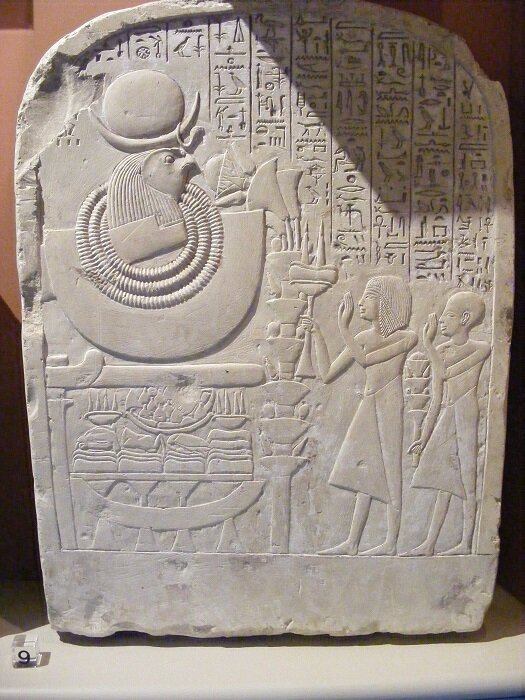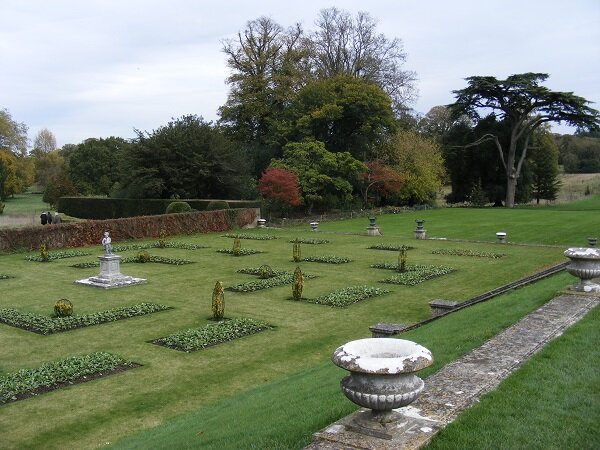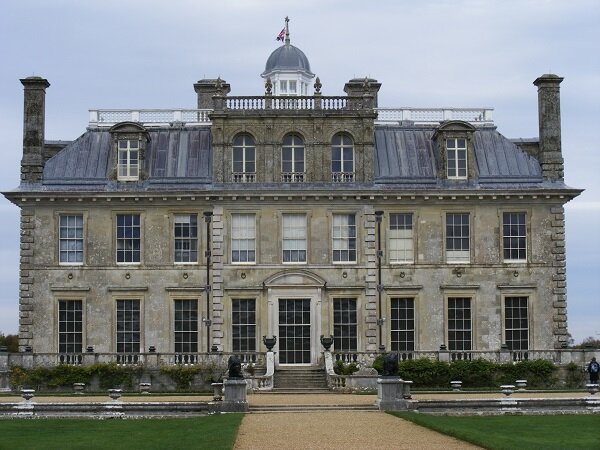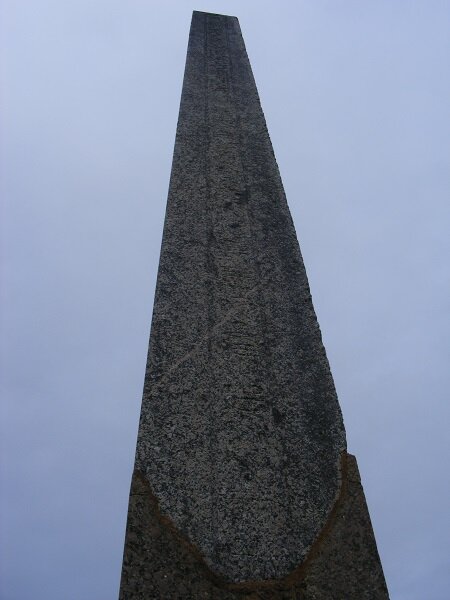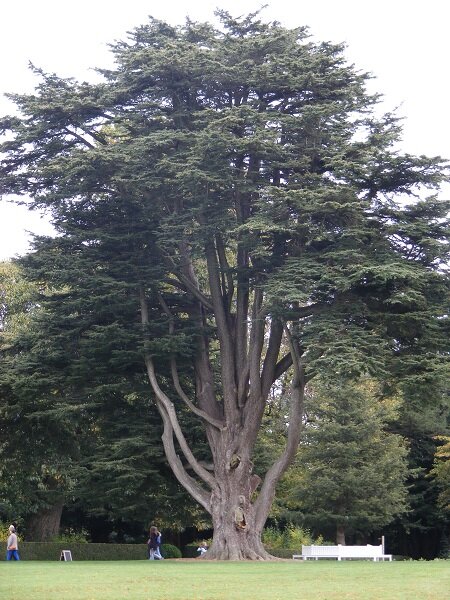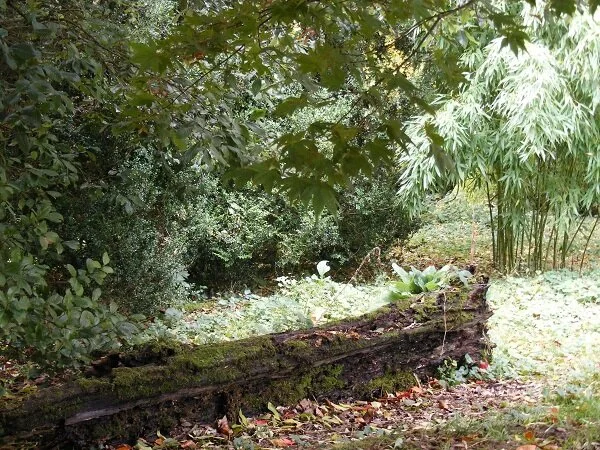Birthday Treat - Kingston Lacy
Kingston Lacy
Kingston Lacy is a country house and estate local to us, about a half hour drive, depending on the traffic. We’ve visited a few times before, but it’s been years since our last visit.
Gordon and Liam decided to take me there as part of my birthday treat. I felt very spoilt the whole day as Gordon drove and, between them, they paid for everything.
The original house was built in medieval times, and in 1636, the lands were sold to Sir John Bankes, who’d been appointed Attorney General to King Charles I in 1634. The family lived at Corfe Castle (just 20 miles from Kingston Lacy), which Sir John had bought in 1635.
After England’s Civil War broke out in 1642, Charles I ordered Sir John to serve in London and Oxford. Corfe Castle by then had become the last Royalist garrison on the Dorset coast, and Sir John’s wife, Lady Mary Bankes, remained at the castle with her children, servants and a force of five men.
Lady Mary Bankes, holding the keys to Corfe Castle, which is in the background - Henry Pierce Bone after John Hoskins (1837)
In May 1643, a force of about forty Parliamentarians demanded the surrender of the castle’s ordnance. Lady Mary’s answer came in the form of cannon fire, which drove them away. Later, however, to buy time to resupply the castle, she gave up the ordnance.
A month later, the castle was under siege by a force of about 500-600 men. Lobbing stones and hot embers from the battlements, Lady Mary and her tiny force managed to repel the enemy, killing and wounding over 100 men.
Three years later, in 1646, she was betrayed by one of her own officers, who led a party of Parliamentarians into the castle. With their jackets reversed, they were mistaken for Royalists, and ‘Brave Dame Mary’ had no choice but to surrender the castle. But her courage was acknowledged, and she was allowed to keep the keys to the castle, which can still be seen at Kingston Lacy.
Her eldest son, Sir Ralph Bankes, had the house built between 1663 and 1665. The gardens and parkland were cultivated at the same time. The estate remained the property of the Bankes family until both, Kingston Lacy and Corfe Castle, were bequeathed to the National Trust in 1982.
On our previous visits, photography wasn’t allowed. I am so glad I took my camera because now, to my delightful surprise, it is. Not all the photos came out well because flash photography isn’t allowed, and my aged camera struggled with the dim lighting in some of the rooms.
Chimneypiece in Inner Hall
One of a pair of torches flanking the chimneypiece, carved from marble
After the entrance hall and inner hall, there’s a marble staircase leading up to the first floor. On the half-landing are three bronze figures – Sir John Bankes, Lady Mary Bankes and Charles I. I couldn’t get a decent picture of the one of Sir John as there were too many people on the stairs.
Bronze figure of Lady Mary Bankes, holding her sword and the key to Corfe Castle
Charles I
The house is packed full of fine art and antiquities, the entire collection built up over generations. There are paintings of the Bankes family going back over 400 years. There are works by Diego Velázquez, van Dyck, Titian, Rubens and Jan Brueghel the Younger.
Most of the antiquities were collected by William John Bankes. During the Peninsular War (1807-1814, a military conflict between Napoleon’s France and Spain for control of the Iberian Peninsula; the UK and Portugal assisted Spain), Bankes served as aide-de-camp to General Sir Arthur Wellesley, who would later become the first Duke of Wellington.
A gentleman-explorer and a close friend of Lord Byron, Bankes travelled frequently to the Near East and Egypt, accumulating the world’s largest individual collection of Ancient Egyptian artefacts, including the Philae obelisk, which still stands in the grounds. While the obelisk was discovered nearly intact, it’s twin was more severely damaged. Still, Bankes obtained both. It took twenty years to transport them from Philae to Kingston Lacy. According to the plaque at the base, Bankes enlisted the help of Giovanni Belzoni to get them from Egypt to Britain. And the Duke of Wellington performed the ceremony when the foundation was laid.
Unfortunately, in 1841, Bankes was involved in a homosexual scandal, a grave crime that carried the death penalty. The Duke of Wellington and other influential friends had already come to his rescue once before in 1833; this time he jumped bail and fled to Italy.
Retaining his financial independence, William Bankes continued to commission works and collect art to furnish his beloved home under the watchful eye of his cherished sister, Anne, Lady Falmouth. This remained his consuming passion for the next fourteen years, until his death.
It’s believed William Bankes never saw his transformed home. But there is a family story that he paid brief, secret visits to his home.
The Library
The keys to Corfe Castle over the fireplace in the library
‘The Creation of the Elements’ on the ceiling in the Spanish Room. It depicts Chronos in the centre, with his wife, Cybele (Earth) and their children Zeus (fire), Hera (air) and Poseiden (water)
‘The Judgement of Solomon’ - Sebastiano del Piombo (unfinished). Recent restoration has revealed 3 different layers. This hangs in the Dining Room.
Organ in the Dining Room
Curved ceiling of the Saloon
‘Queen Henrietta Maria’ - Sir Anthony van Dyck, in the Saloon
'Marchesa Maria Serra Pallavicino' - Sir Peter Paul Rubens, in the Saloon
Ceiling of the second floor
The stairs to the second floor were roped off; hopefully, next time, we’ll get to venture upstairs.
Under Ralph Bankes, the last Bankes to live at Kingston Lacy, the house gradually fell into decay. A solitary man, he moved his living area downstairs to what used to be the Audit Room, just past the chimneypiece in the Inner Hall.
The Audit Room
Portable TV
On the other side of the chimneypiece, opposite the marble stairs leading up, is the servants’ area. The Ancient Egyptian artefacts are displayed in what used to be the housekeeper’s room.
A ‘timetable’ of sorts…
Telephone!
‘In the boat, the sun is shown both as a child and sacred beetle (scarab). In the cavity, the sun was represented by a flint, now lost. The Ibis-headed god, Thoth, is offering the sacred eye of Horus. Below the scribe Ramose is shown offering a prayer’
‘Stela showing two types of carving - relief and incised. Two chisel-bearers are making an offering to Horus. On the four altars meat (an ox’s head and leg and duck) and figs are readied for a burnt offering to the moon-god Thoth’
The stables have been converted to a restaurant/café with outside seating.
The stable block
After lunch, we explored the gardens, which are breath-taking…
Archway leading to the gardens
‘Dutch’ garden on the side of the house
View of the house from the south lawn
The Philae obelisk
Looking up at the obelisk
We thought this was shrubbery…
… but its actually the branches of a tree! What a lovely ‘hiding’ spot.
Very tall tree!
The obelisk and its more damaged twin in the distance
The obelisk and the house
Lots of gorgeous autumn colours!
House seen through low hanging branches
Acer ‘Osakazuki’
Bamboo
More bamboo
Fallen logs are left to Nature
Japanese Garden
Another part of the Japanese Garden
Obelisk and Autumn colours
There’s also a ‘woodland walk’, which we’ll probably go on in the spring. We’ve already decided on a springtime visit to see the gardens and blossoming flowers.

